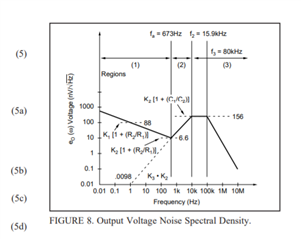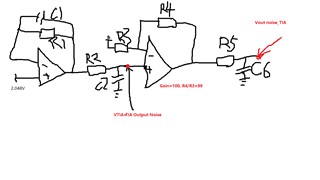Other Parts Discussed in Thread: OPA818, OPA2320, LM4132, TINA-TI, OPA320, OPA627
Hi team,
I want to use OPA657 as a TIA circuit. I need to calculate the noise for OPA657 TIA circuit.
Q1: In the datasheet, I cannot understand" Equation 9" as below:
What is the F value in Equation 9 ? F=f =sqrt(GBP / 2 R C) Hz
Q2: How to calculate CD in Equation 9?


 ?
?
